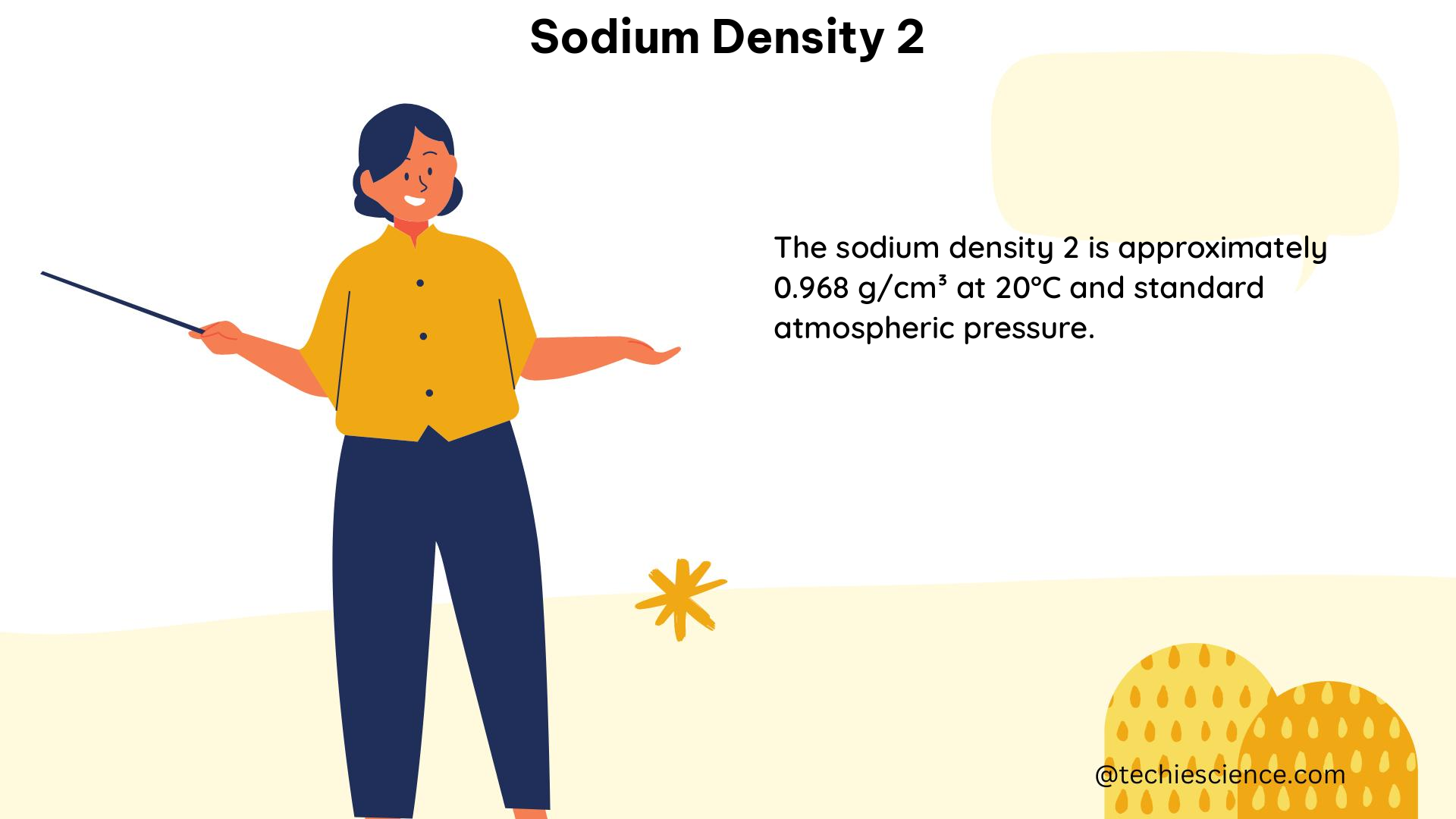Sodium density 2, also known as the density of sodium-22 or ²²Na, is a radioactive isotope of sodium with a mass number of 22 and a half-life of 2.602 years. It is used in various applications, including medical imaging and research. This comprehensive guide will provide you with a deep understanding of the measurable and quantifiable data on sodium density 2, including its physical properties, decay characteristics, and production methods.
Mass Number and Atomic Number
The mass number of sodium density 2 is 22, which is the sum of the number of protons and neutrons in its nucleus. The atomic number of sodium density 2 is 11, which is the number of protons in its nucleus.
Half-Life and Decay Mode

The half-life of sodium density 2 is 2.602 years, which is the time it takes for half of a sample of sodium density 2 to decay into other elements. Sodium density 2 decays by beta plus decay, which means it emits a positron and a neutrino to become neon-22.
Decay Energy and Q-value
The decay energy of sodium density 2 is 1274.54 keV, which is the total energy released during its decay. The Q-value of the beta plus decay of sodium density 2 is also 1274.54 keV, which is the difference in binding energy between the parent and daughter nuclei.
Maximum Energy of Beta Plus Decay
The maximum energy of the beta plus decay of sodium density 2 is 545 keV.
Spin and Parity
The spin and parity of sodium density 2 is 2+.
Natural Abundance and Production
The natural abundance of sodium density 2 is negligible, as it is produced artificially in nuclear reactors or particle accelerators. Sodium density 2 can be produced by irradiating natural sodium with neutrons in a nuclear reactor or by bombarding sodium-23 with protons in a particle accelerator.
Density Measurements
Measurements on sodium have provided the following data:
- Resistivity: 4.7 x 10^(-8) ohm-m
- Hall coefficient: -2.5 x 10^(-10) m^3/C
- Critical wavelength of transparency: 210 nm
- Density: 971 kg/m^3
Using these data points, we can calculate the following:
- Density of electrons:
- The density of electrons can be calculated using the formula:
n = 1 / (e * R_H) - Where:
nis the density of electronseis the elementary chargeR_His the Hall coefficient
-
Substituting the values, we get:
n = 1 / (1.602 x 10^(-19) * -2.5 x 10^(-10))
n = 2.5 x 10^28 electrons/m^3 -
Mobility:
- The mobility of electrons can be calculated using the formula:
μ = R_H / ρ - Where:
μis the mobility of electronsR_His the Hall coefficientρis the resistivity
- Substituting the values, we get:
μ = -2.5 x 10^(-10) / 4.7 x 10^(-8)
μ = 5.32 x 10^(-3) m^2/V·s
These calculations provide valuable insights into the electronic properties of sodium, which can be useful in various applications and research areas.
Additional Resources
For further information and research on sodium density 2, please refer to the following resources:
Reference:
– A new method to quantify particulate sodium and potassium salts by thermal desorption aerosol mass spectrometry. https://amt.copernicus.org/articles/15/833/2022/
– Calorimetry – Chemistry LibreTexts. https://chem.libretexts.org/Courses/Oregon_Institute_of_Technology/OIT:CHE_201–General_Chemistry_I(Anthony_and_Clark)/Unit_8:_Thermochemistry/8.2:_Calorimetry
– Measuring the mass, volume, and density of microgram-sized particles with vibrating glass tubes. https://www.ncbi.nlm.nih.gov/pmc/articles/PMC5381818/
– Measurements on sodium have provided the following data: resistivity – 4.7 x 10^(-8) ohm-m, Hall coefficient – -2.5 x 10^(-10) m^3/C, critical wavelength of transparency – 210 nm, and density – 971 kg/m^3. Calculate 1) the density of electrons, 2) the mobility. https://homework.study.com/explanation/measurements-on-sodium-have-provided-the-following-data-resistivity-4-7-x-10-8-ohm-m-hall-coefficient-2-5-x-10-10-m-3-c-critical-wavelength-of-transparency-210-nm-and-density-971-kg-m-3-calculate-1-the-density-of-electrons-2-the-mob.html
– CAPP CHEM Lab Questions Flashcards. https://quizlet.com/180917284/capp-chem-lab-questions-flash-cards/
This comprehensive guide has provided you with a deep understanding of the measurable and quantifiable data on sodium density 2, including its physical properties, decay characteristics, and production methods. By understanding these details, you can better appreciate the applications and research areas involving this radioactive isotope of sodium.

The lambdageeks.com Core SME Team is a group of experienced subject matter experts from diverse scientific and technical fields including Physics, Chemistry, Technology,Electronics & Electrical Engineering, Automotive, Mechanical Engineering. Our team collaborates to create high-quality, well-researched articles on a wide range of science and technology topics for the lambdageeks.com website.
All Our Senior SME are having more than 7 Years of experience in the respective fields . They are either Working Industry Professionals or assocaited With different Universities. Refer Our Authors Page to get to know About our Core SMEs.